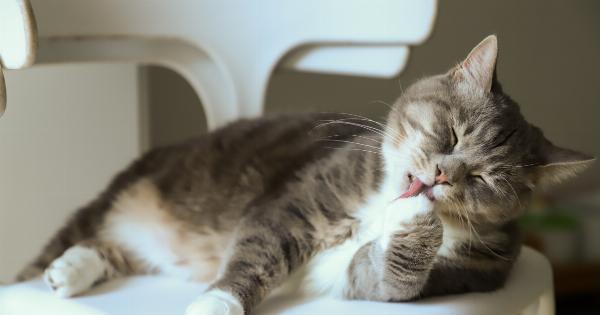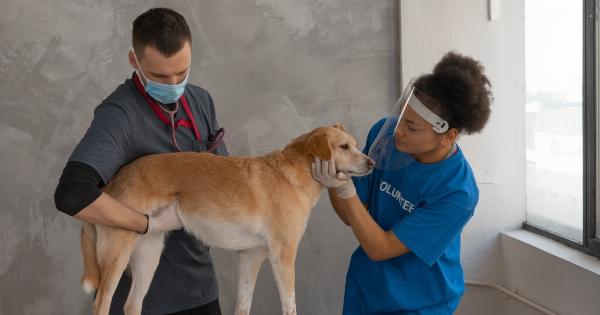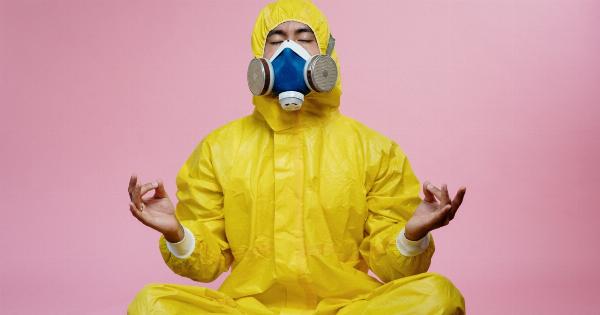Regular check-ups are essential for maintaining the health and well-being of your beloved pets.
However, circumstances might arise where a trip to the veterinarian is not possible, such as during a pandemic or when your pet’s condition is not critical enough to warrant an immediate visit. In such situations, a DIY veterinary exam can help you assess your pet’s general health and identify any possible signs of illness or discomfort.
While this exam cannot replace professional medical care, it can provide valuable information to share with your veterinarian during a telemedicine consultation or until you can schedule an in-person visit. Here are eight important things to look for during a DIY veterinary exam:.
1. Temperature
Knowing your pet’s normal body temperature can be crucial in detecting infections or other health issues. For dogs and cats, a normal temperature ranges between 99.5°F and 102.5°F (37.5°C and 39.2°C).
Use a digital thermometer designed specifically for pets and follow the manufacturer’s instructions to obtain an accurate reading. Lubricate the thermometer with petroleum jelly or water-based lubricant, gently lift your pet’s tail, and insert the thermometer into the rectum. Holding it in place for about a minute should provide an accurate reading.
2. Heart Rate and Pulse
A pet’s heart rate and pulse can indicate their cardiovascular health. To check their heart rate, place your hand on the left side of your pet’s chest, just behind their elbow.
Count the number of beats you feel in 15 seconds and multiply it by four to get the beats per minute. For dogs, a healthy heart rate can range from 60 to 140 beats per minute, while cats typically have a rate between 140 and 220 beats per minute.
3. Respiratory Rate
Observing your pet’s respiratory rate can help detect respiratory distress, labored breathing, or other breathing-related issues. While dogs normally take 10 to 30 breaths per minute, cats take around 20 to 30 breaths per minute.
Count how many times your pet’s chest rises and falls within one minute while they are resting calmly. Avoid measuring during or after exercise as it may affect the accuracy of your observations.
4. Hydration
Assessing your pet’s hydration status is vital, especially if they are unwell or not drinking enough water. Lift the skin at the scruff of your pet’s neck and let go. The skin should immediately fall back into place.
If it takes more than a second or two to flatten, your pet may be dehydrated. Additionally, check their gums – moist and pink gums generally indicate good hydration, while dry and pale gums may suggest dehydration.
5. Coat and Skin
Inspecting your pet’s coat and skin can reveal signs of allergies, infections, fleas, or other external issues. A healthy coat should be shiny, smooth, and free of excessive dandruff or bald patches.
Check for any redness, rashes, lumps, bumps, sores, or unusual odors. Pay attention to your pet scratching excessively, as it may indicate parasites or skin problems. Also, part your pet’s fur and check for fleas or ticks in areas such as behind their ears, on the belly, or around the tail.
6. Eyes
Your pet’s eyes can provide valuable insight into their overall health. Clear and bright eyes with no redness or discharge are signs of normalcy.
Tear stains, redness, cloudiness, excessive tearing, or any unusual discharge may indicate an eye infection or underlying health issue. Additionally, check for any signs of squinting, pawing at the eyes, or changes in your pet’s vision, as these could be signs of injury or disease.
7. Ears
The state of your pet’s ears can be indicative of ear infections, parasites, or other ear-related issues. Check for redness, inflammation, excessive wax buildup, foul odor, or any discharge.
If your pet frequently shakes their head or scratches at their ears, it may suggest discomfort or infection. However, avoid inserting anything into your pet’s ear canal, as it can cause damage. Consult with your veterinarian if you notice any concerning signs.
8. Weight and Body Condition
Maintaining a healthy weight is crucial for your pet’s overall well-being. Assess their weight by running your hands over their ribs, back, and abdomen.
You should be able to feel their ribs without too much fat covering, but they should not be prominently visible. If you cannot feel their ribs at all or if they are overly prominent, it may indicate overweight or underweight conditions, both of which can have significant health implications.
Remember to consult your veterinarian for guidance on your pet’s specific breed and ideal weight range.
A DIY veterinary exam should never replace regular veterinary care. If you notice any abnormalities or concerns during the examination, it is essential to seek professional advice from your veterinarian.
They can provide a proper diagnosis and develop an appropriate treatment plan based on a comprehensive examination and, if necessary, additional diagnostic tests.
Remember, prevention is always better than cure. Regular check-ups, vaccinations, and preventive treatments recommended by your veterinarian can help ensure your furry friends lead long, healthy, and happy lives.






























